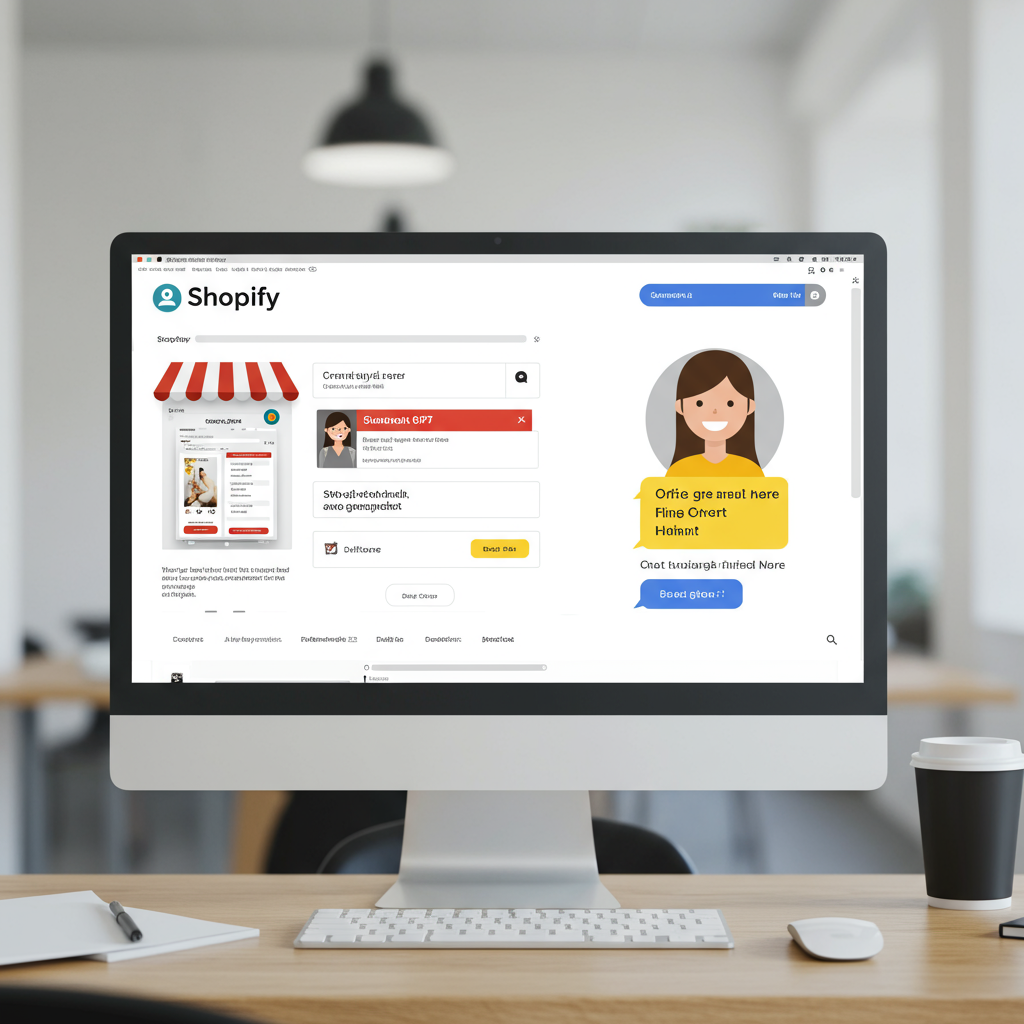Discover how I transformed my customer interactions and boosted sales by integrating live chat into my Shopify store.
Hey there, fellow Shopify merchants! I’m here to share a game-changer that significantly improved my store’s customer service and, ultimately, my bottom line: live chat support.
In today’s fast-paced e-commerce world, customers expect instant gratification. They have questions, and they want answers *now*.
That’s where live chat comes in. It allows you to connect with your customers in real-time, right on your website, providing immediate assistance.
From my own experience, implementing live chat was one of the best decisions I made for my Shopify store. It truly transformed how I interact with my customers.
So, why is live chat so crucial for your Shopify store? Let me break down the benefits I’ve personally observed.
Firstly, it dramatically increases conversion rates. When a customer has a pre-purchase question, a quick answer can be the difference between a sale and an abandoned cart.
Secondly, customer satisfaction skyrockets. People appreciate getting their issues resolved quickly and efficiently without having to wait for an email response or navigate complex phone menus.
Thirdly, it helps reduce cart abandonment. Often, a small doubt or a missing piece of information is enough for a customer to leave their cart. Live chat can address these concerns instantly.
Fourthly, it builds trust and credibility. Offering real-time support shows that you’re accessible, responsive, and genuinely care about your customers’ experience.
Finally, it provides invaluable insights. Chat transcripts often reveal common pain points, frequently asked questions, and areas where your product descriptions or FAQs might be lacking.
Now that you’re convinced, let’s talk about how *I* went about setting up live chat on my Shopify store. The first step is choosing the right live chat solution.
The Shopify App Store is your best friend here. There are numerous excellent live chat apps available, each with its own set of features and pricing plans.
When I was choosing, I looked for key features like seamless Shopify integration, customization options for the chat widget, and the ability to set up automated responses or chatbots.
I also considered analytics reporting, mobile responsiveness, and, of course, the pricing structure to ensure it fit my budget. Popular options include Tidio, Gorgias, and LiveChat, among others.
Once you’ve picked an app, the setup process is generally quite straightforward. My first step was to install the app directly from the Shopify App Store.
After installation, the app usually guides you through an initial configuration. This typically involves connecting it to your Shopify store and setting up your basic chat widget appearance.
I customized the chat widget’s color to match my brand, chose its position on the page (usually bottom right), and crafted a welcoming greeting message.
I also made sure to set my availability hours. This is crucial so customers know when they can expect a live agent and when they’ll need to leave an offline message.
Next, I delved into customizing the chat experience. I set up pre-chat forms to collect customer names and email addresses, which is super helpful for follow-ups.
For times when I’m offline, I configured an offline message that directs customers to my contact form or FAQ page, ensuring they always have a way to reach me.
I also implemented automated greetings based on specific page visits or time spent on the site. For example, a message popping up on the checkout page asking if they need help.
Canned responses, or macros, became my best friend. These are pre-written answers to common questions, saving me a ton of time and ensuring consistent responses.
Before launching, I performed extensive testing. I pretended to be a customer, asking various questions, testing the offline form, and checking the widget’s appearance on different devices.
This step is absolutely critical to catch any glitches or ensure the customer journey is smooth. You want to make sure everything works perfectly before your customers see it.
After going live, my work wasn’t done. I continuously monitored chat analytics, looking at response times, customer satisfaction ratings, and the types of questions being asked.
This data helped me refine my canned responses, improve my product descriptions, and even identify areas where my website navigation could be clearer.
A quick note on Shopify Inbox: If you’re looking for a very basic, native solution, Shopify Inbox is built right into your Shopify admin. It’s simple, free, and integrates directly with your store.
While it might not have all the advanced features of third-party apps, it’s an excellent starting point for many merchants, especially those just dipping their toes into live chat.
My advice for anyone using live chat is to be proactive. Don’t just wait for questions; use triggers to offer help when customers seem to be struggling.
Keep your responses concise, clear, and always maintain a friendly, helpful tone. Remember, you’re representing your brand in real-time.
And what do *you* think about this article? Have you tried live chat on your Shopify store, or are you considering it? I’d love to hear your thoughts and experiences!
In conclusion, setting up live chat on your Shopify store is a powerful way to enhance customer service, build trust, and ultimately drive more sales.
It’s an investment that pays dividends in customer loyalty and a healthier bottom line. I highly recommend you explore it for your own e-commerce venture.






